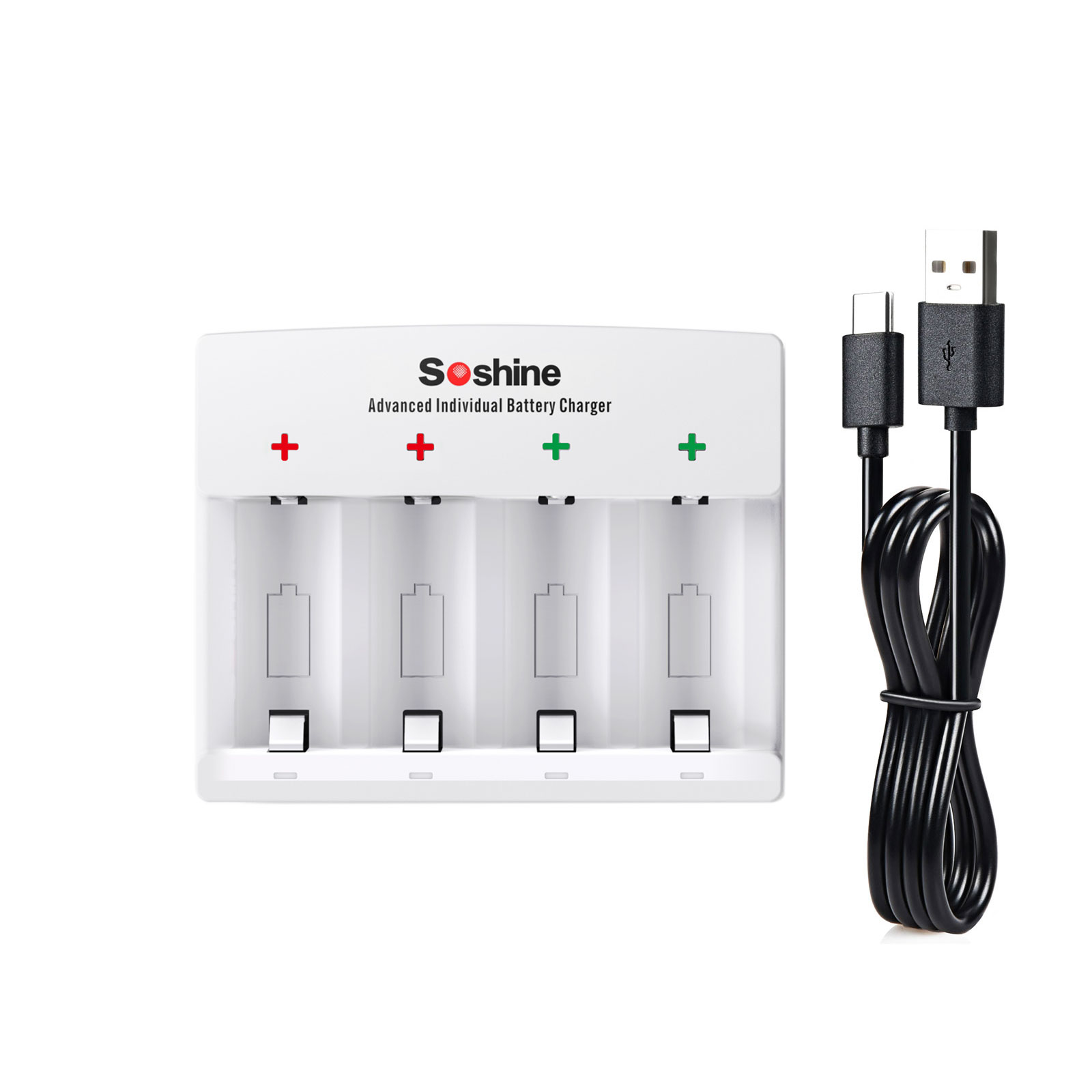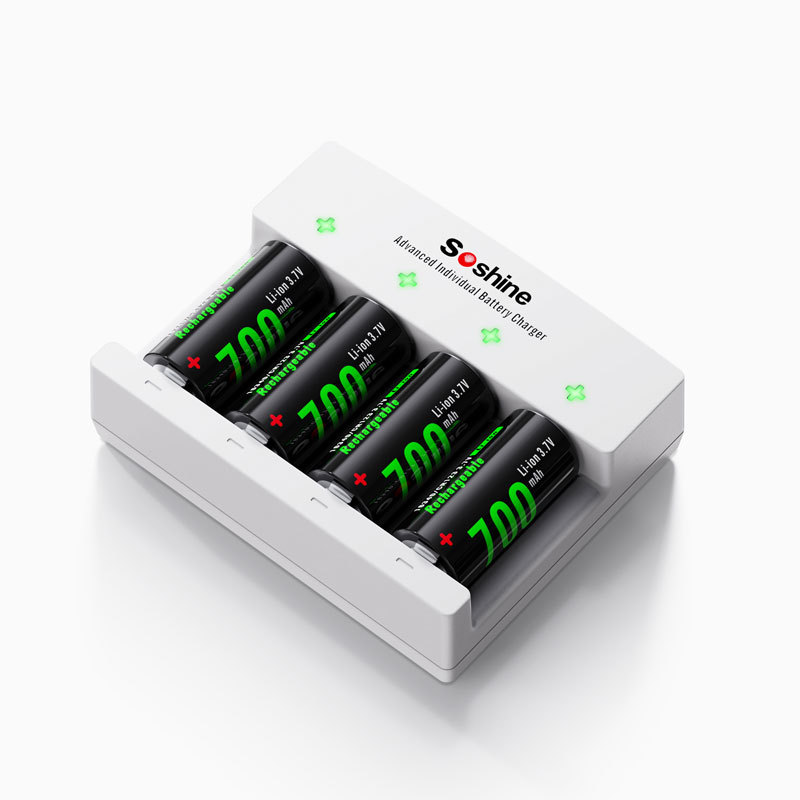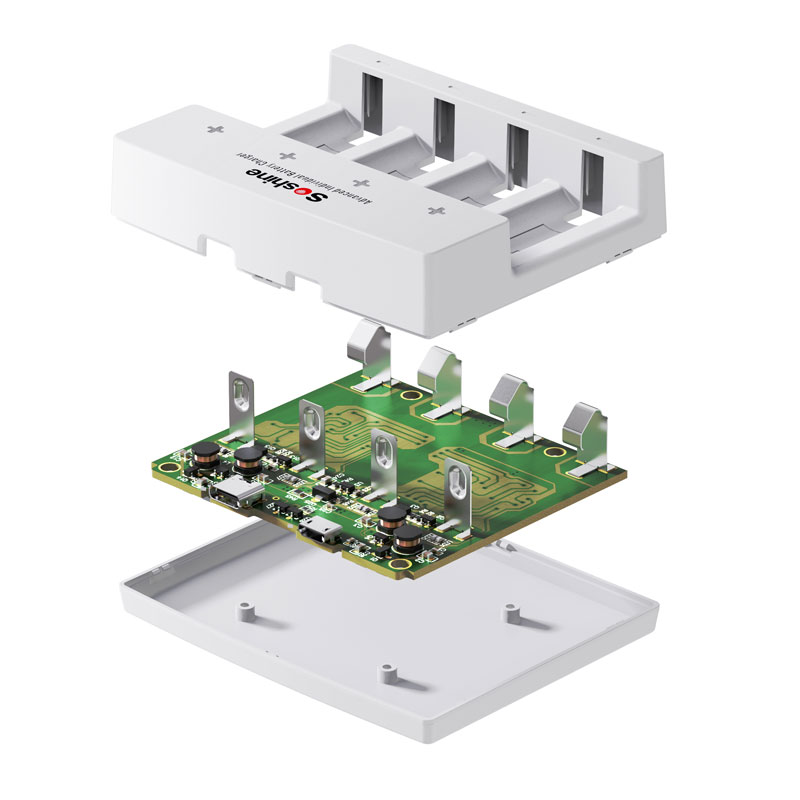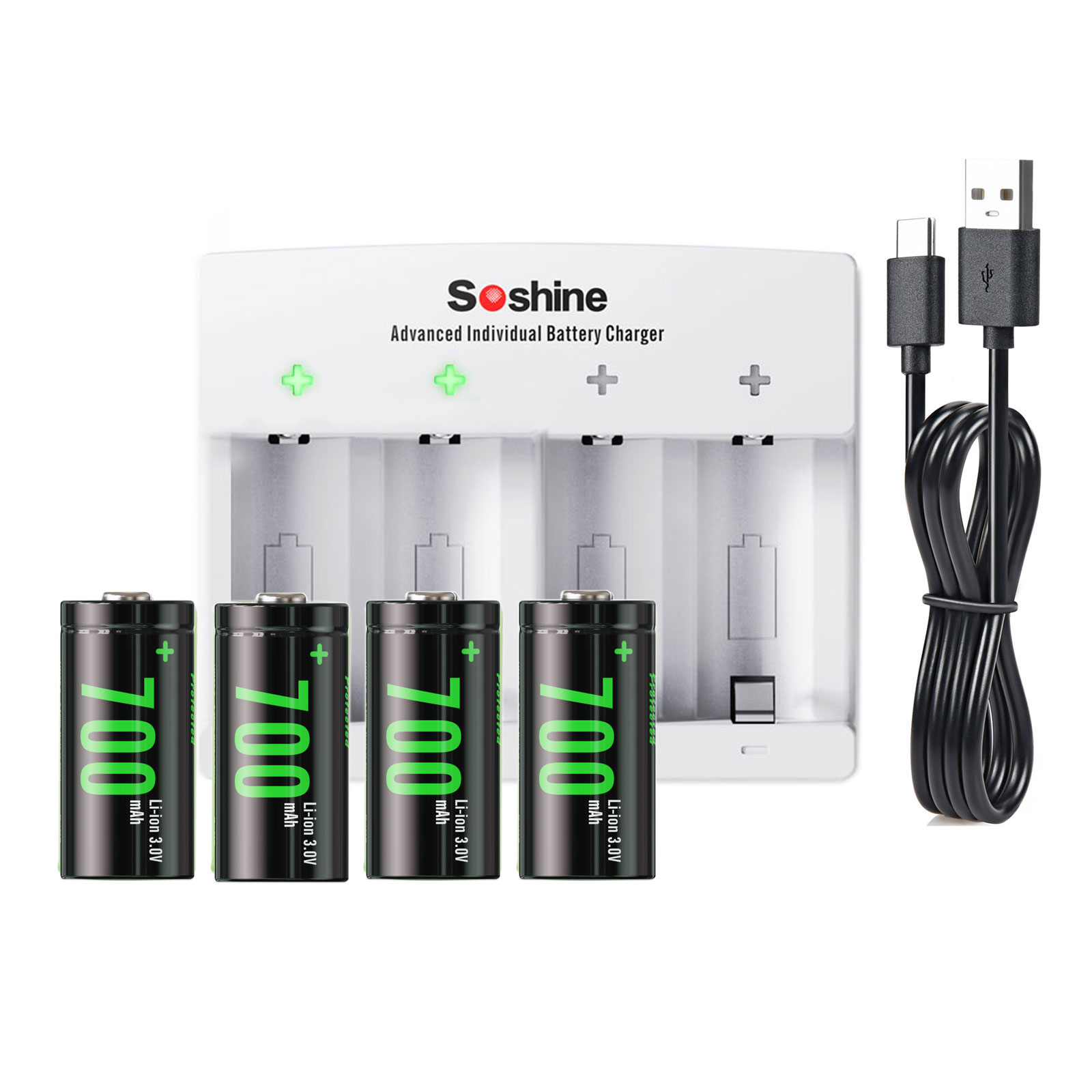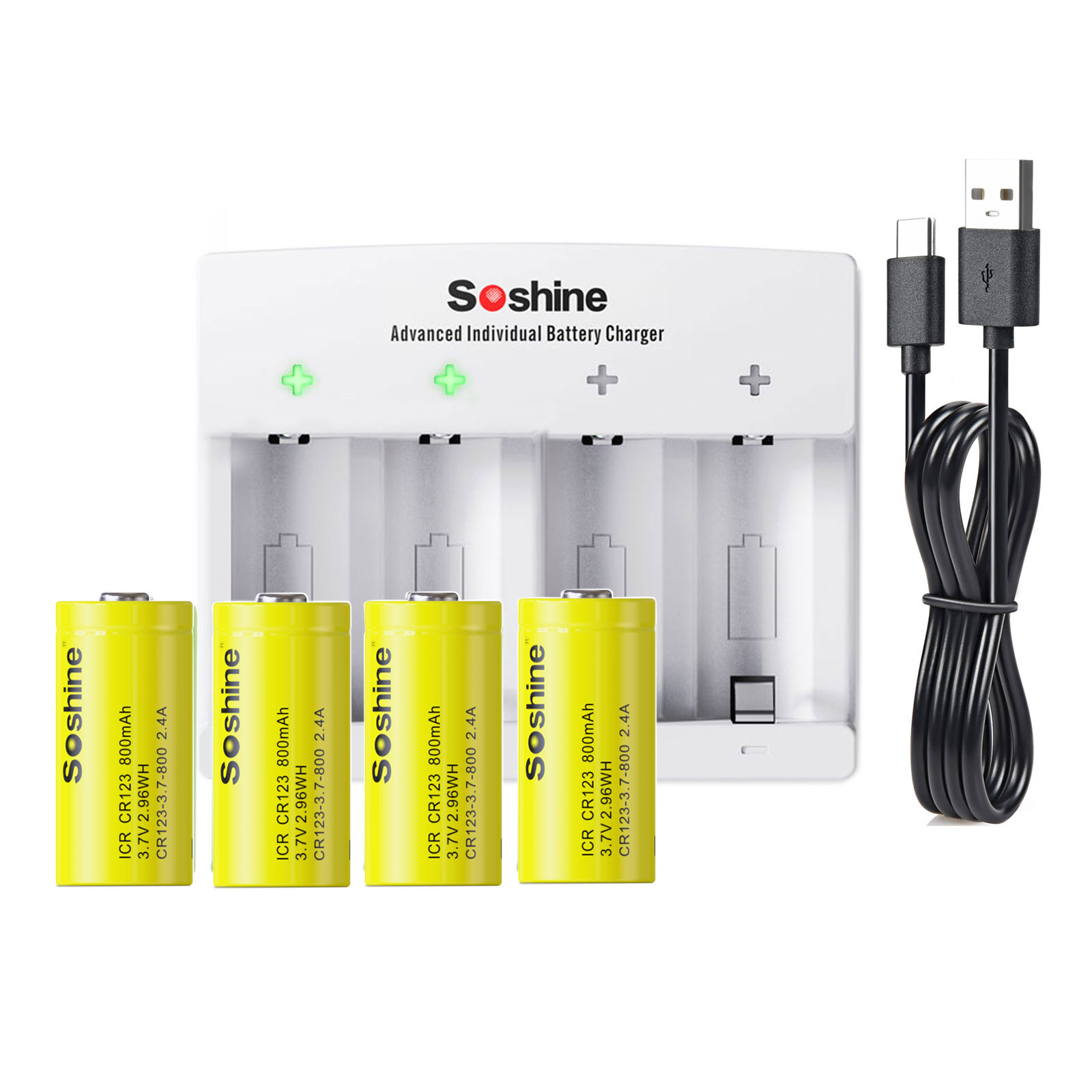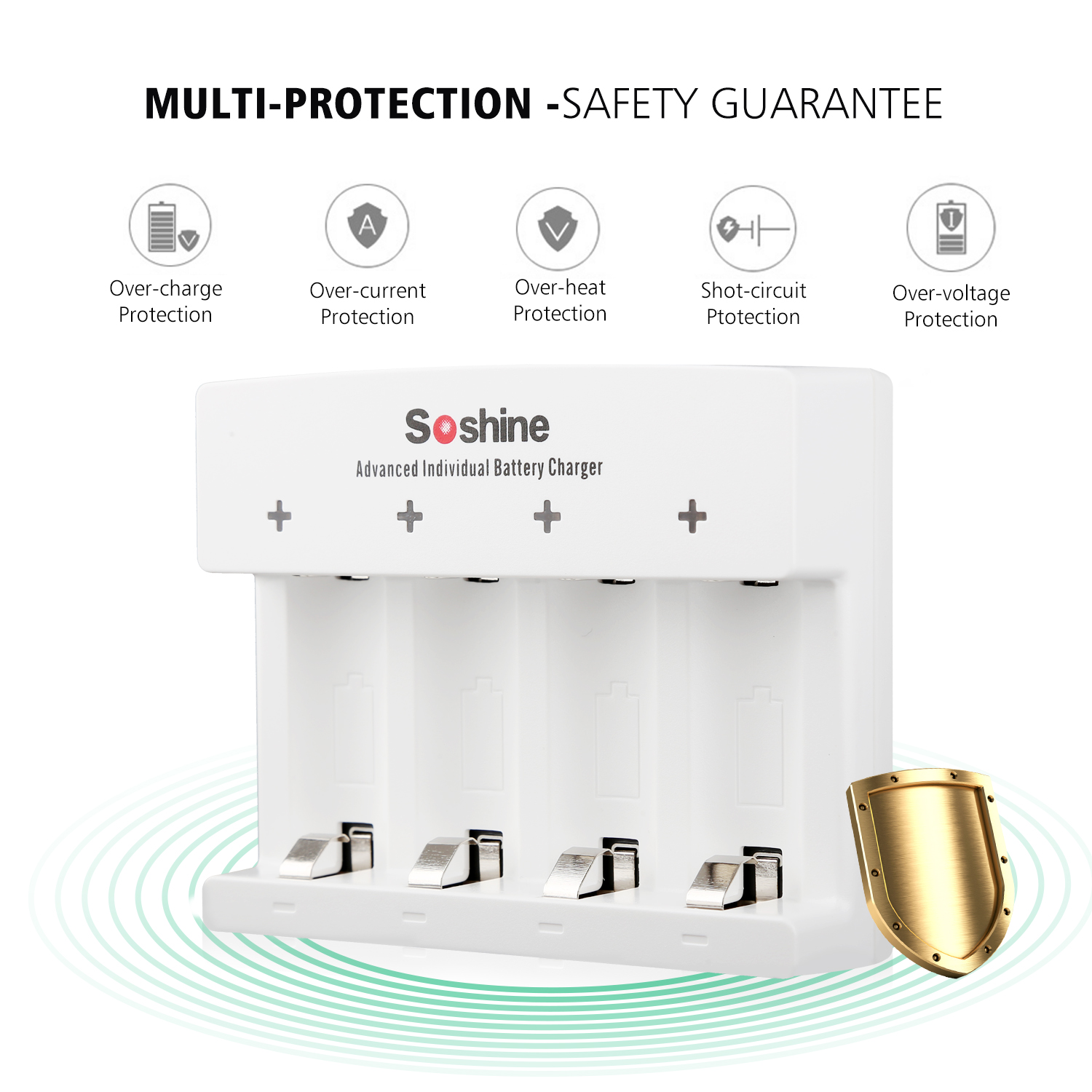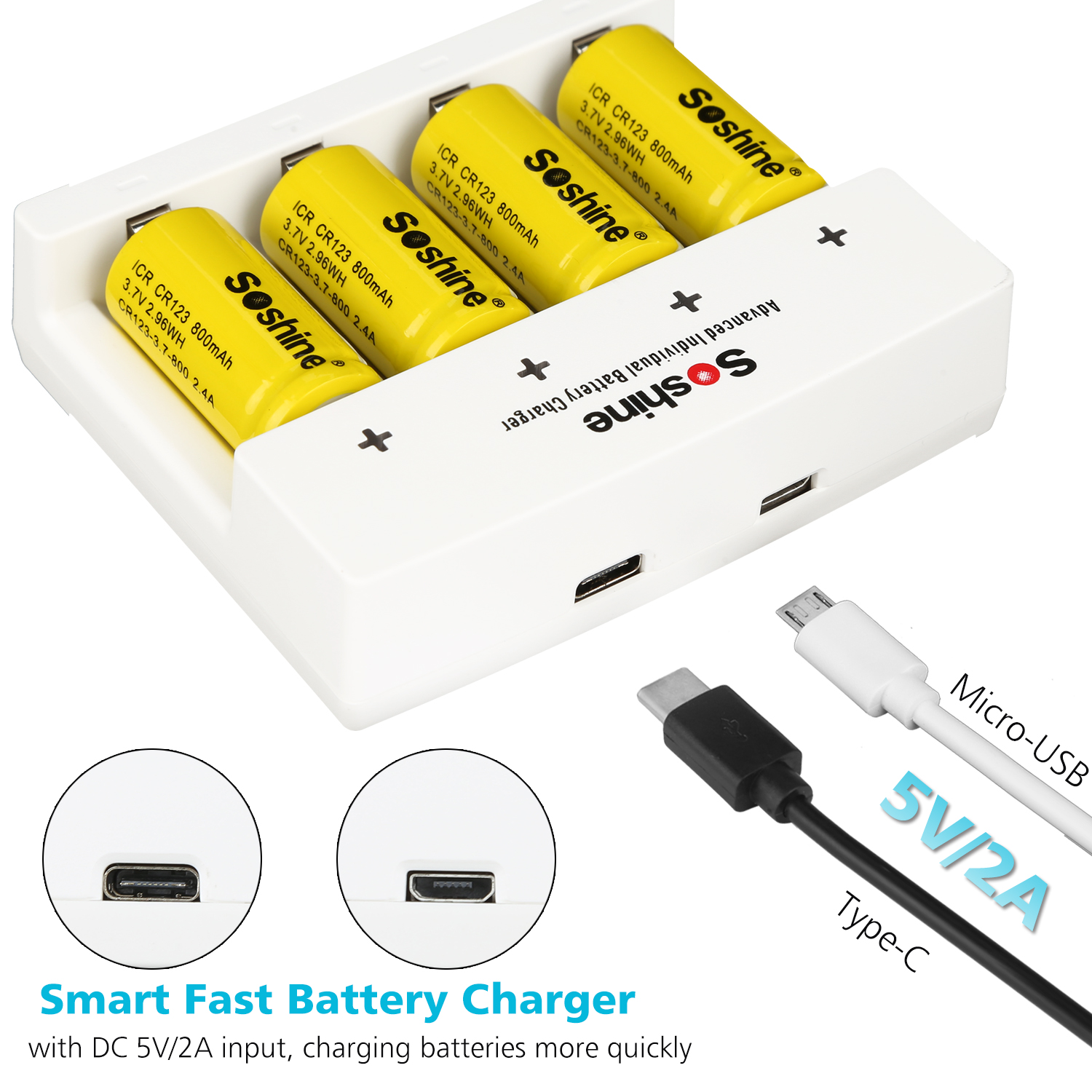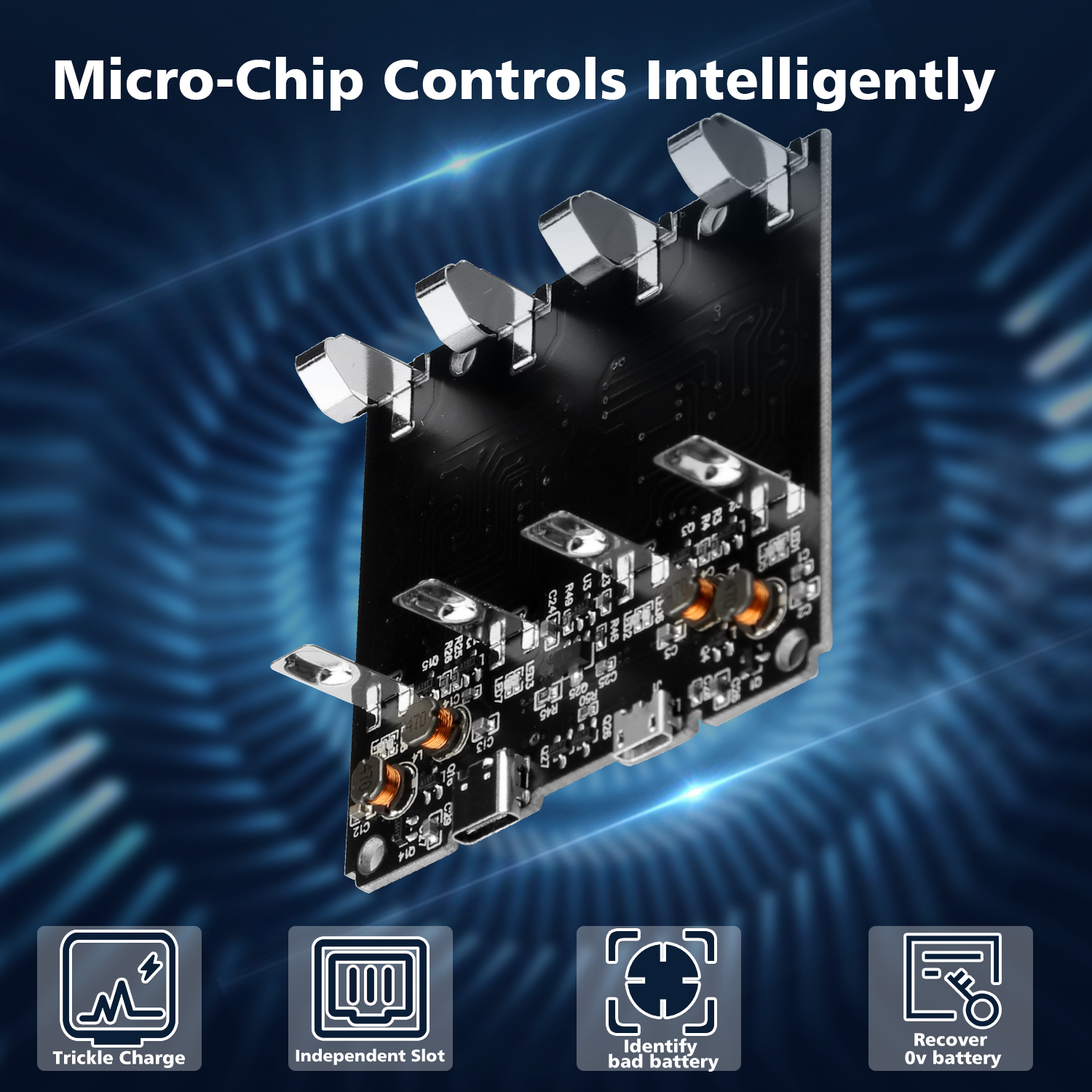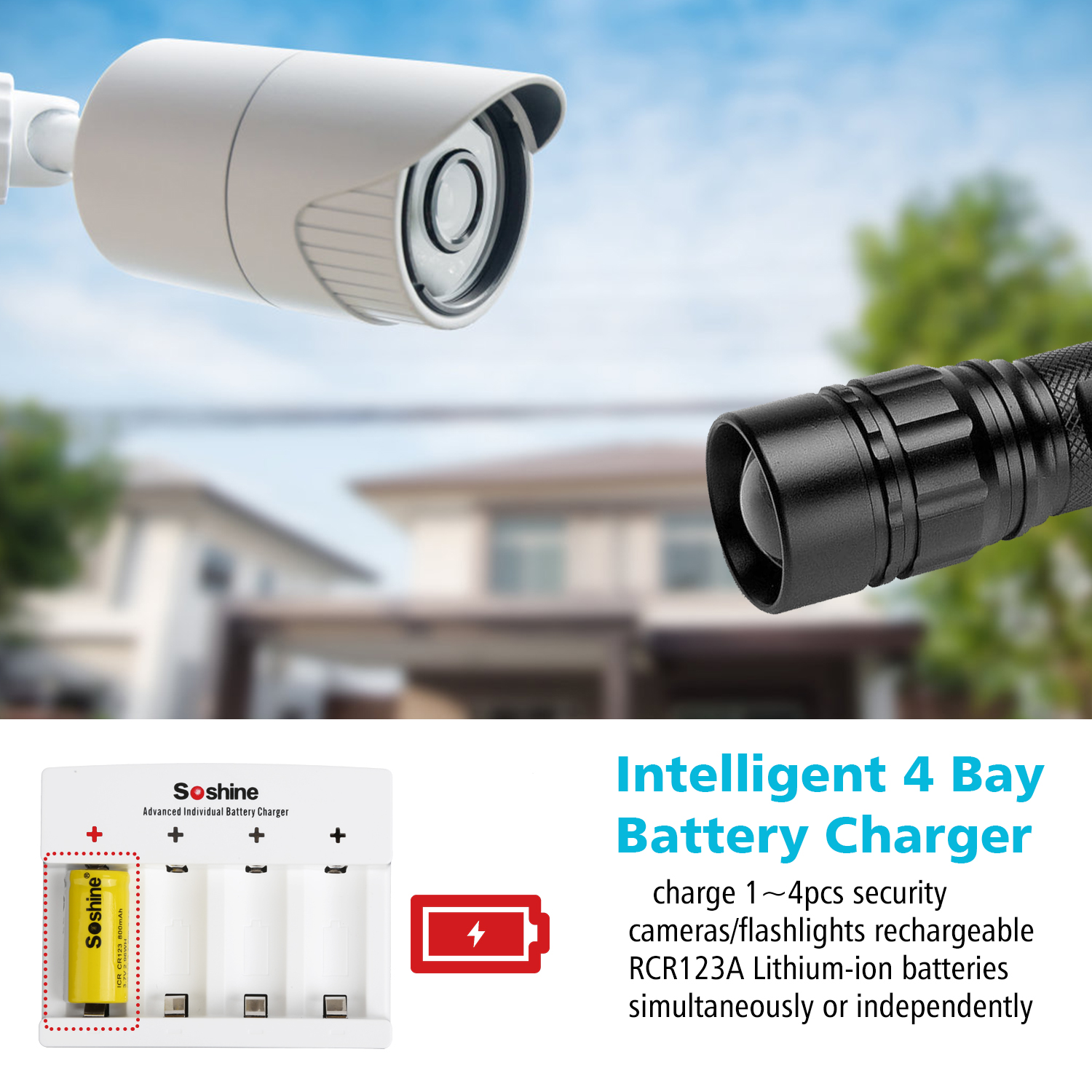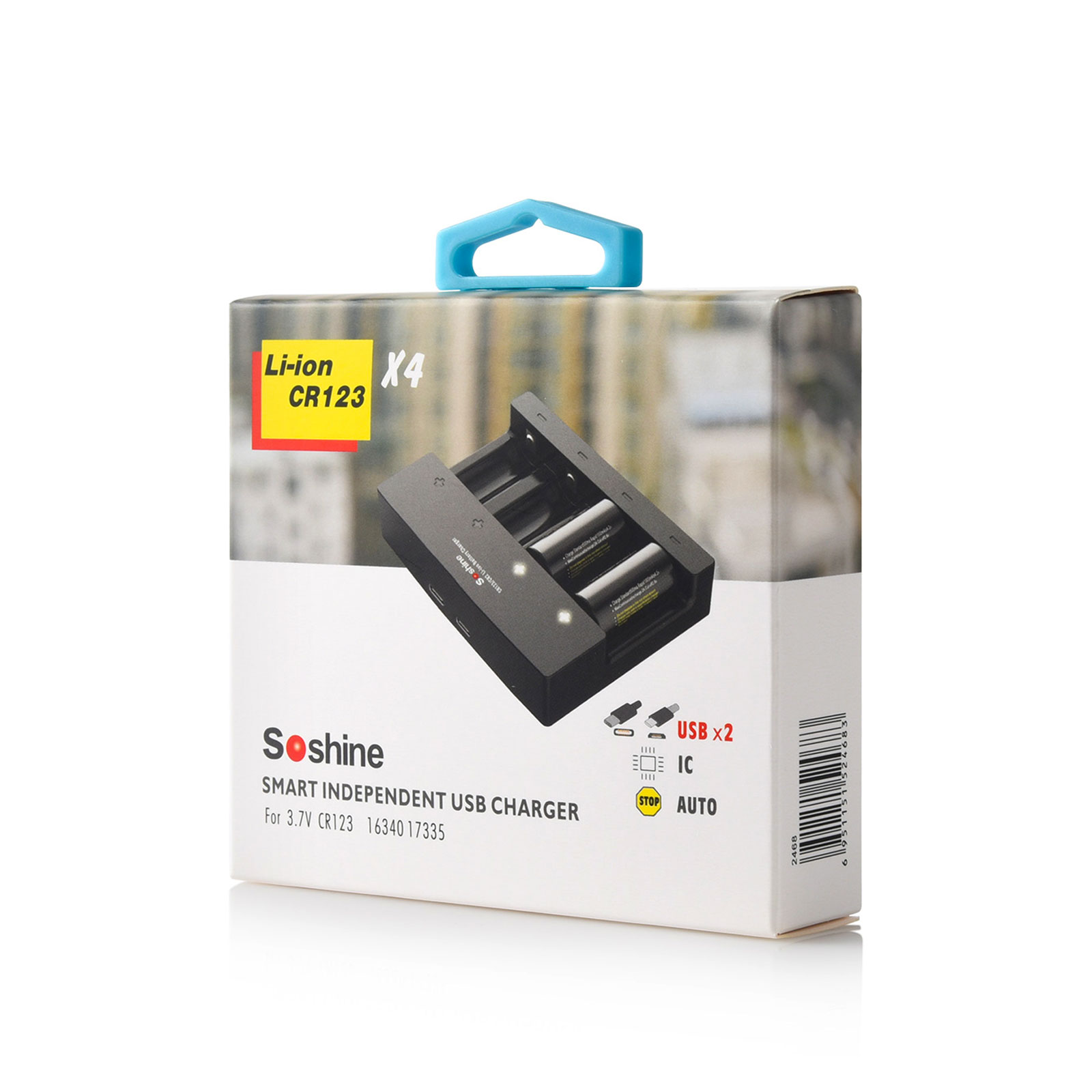1-4PCS Li-ion RCR123/16340 Battery Charger |S4 Intelligent Speedy Battery Charger
For 1-4pcs Li-ion RCR123 16340 17335
Bar Code:
Model: S4
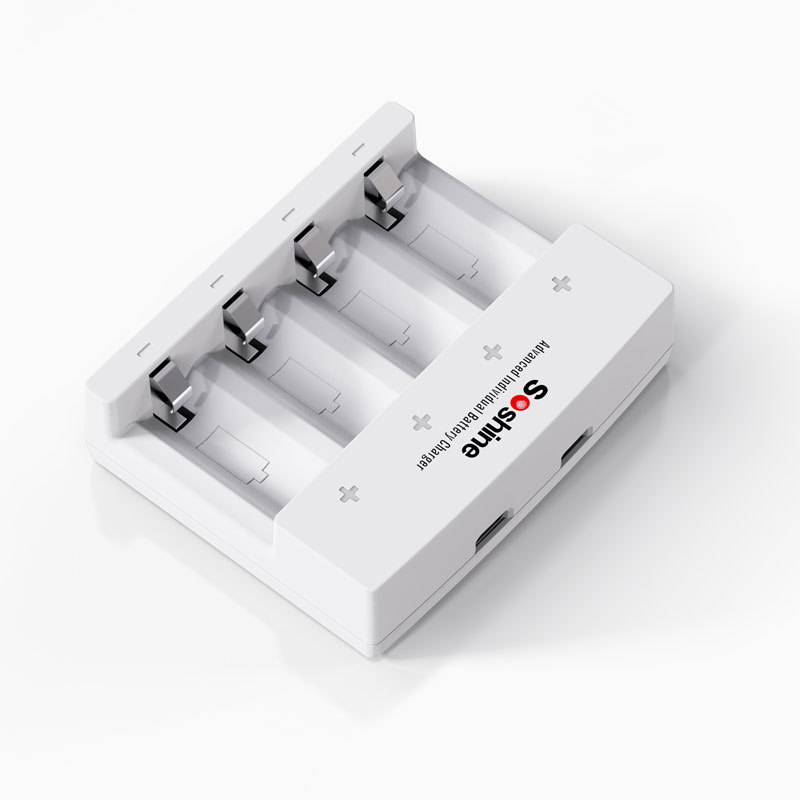
Quick charger
This charger is an intelligent charger especially designed to charge for 1-4pcs
Soshine RCR123 -3.0V
Li-ion RCR123 / 16340 / 17335 3.6/3.7V
Li-ion 16340P(Protection) 3.6/3.7V
Specification:
Input: 1-2A micro USB /Type-C USB
Output: 4.2VDC 600mA*4
Dimensions: L86*W70*H23 mm
Weight:g
2 pcs Individual LED indicate:
Red on ------------ Battery Charging
Green on -----------Charge complete
Turn off ------------Stand by
Red-Blue flash ---- Non rechargeable Li-ion battery like Lithium,Ni-MH ,Ni-Cd, Alkaline
Low voltage between <2.0V
Feature:
- End-of-charge voltage detection assures the safe and full charge any time
- Short-circuit protection
- Over voltage cut-off protection ----- prevents damage to your battery due to over voltage
- Complete individual channels ------ convenience; prevent 4 batteries charge each other
- Charge Method: CC/CV -------------- Charge battery fully and quickly
- Reverse polarity protection --------- prevent damage to your battery and charger
Patent No.: ZL 2019 3 0189990.1
Questions & Answers:
1Why does the battery charger turn light take longer?
Dueto the large coverage of 123 battery capacity (250-800mAH). In order to ensurethat everyone can be fully charged after turning on the lights, we set a lowerturning current (about 30mA). Therefore, the constant voltage charging time islonger, especially the aging battery has a longer constant voltage time. (Thenormal battery charging time is: battery capacity/charging current*1.2~1.3)
2.Why set up charging voltage?
Ourcharger is equipped with a charging voltage (the installed battery will firstdetermine whether the voltage is less than the set value (iron lithium 3.5V,ternary 4.15V) or it will directly display full charge.) This function is toprevent users from loading A battery that has been fully charged for a certainperiod of time and again shows that charging leads to a long waiting period ofunnecessary constant voltage charging. This function will also cause anotherphenomenon that when the battery is about to be fully charged (the open circuitvoltage is above 4.15V), it will be displayed immediately when it is removedand reinstalled.
3.Why the batteries are placed in different slots and the colors of the indicatorlights are different?
Becausethis is a consumer electronic product, the benchmarks and MCUs we selected areof consumer level (the overall theoretical accuracy of voltage and current isabout 2.5%), so the consistency of each channel cannot reach the accuracy ofinstrument level. Therefore, if the battery voltage is right at the thresholdof the charging voltage, the fully charged battery will display the chargingstatus when it is loaded into another channel or the battery in the chargingstatus will change to another channel and display the charging status. Becausethe voltage capacity is not much during the constant voltage charging stage,the display state change caused by the 2.5% error has little effect on thesaturation of the battery. If it shows full, you can choose to take it down oruse it to continue charging.
4.Why the red light of the charger flashes after the battery is placed in thecharger?
Ifthe battery flashes red when the charger is installed, the cell voltage is alreadybelow 1.8V. And there is a small current (about 40mA) to charge, and the redlight keeps flashing until the battery is removed and reinstalled, and thevoltage is higher than 1.8V before it will be converted to normal charging.However, for safety reasons, we strongly recommend that you give up using thisbattery. Because recharged lithium batteries are deeply overcharged, there aremany uncertain risk factors. (For example: voltage cannot be charged to therated value, heat generation, electric leakage, liquid leakage, severe capacitydrop, explosion, fire...)

 Home
Home About Us
About Us
